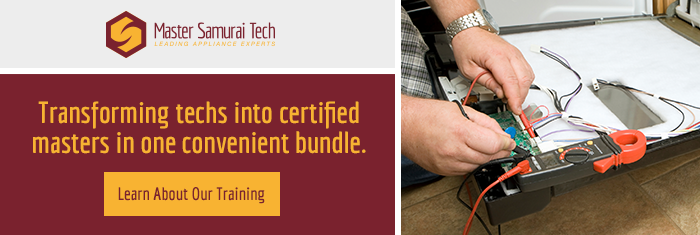 One of the most frequently asked questions we hear from our customers when contemplating whether or not to repair their appliance is, “How much is a new one?” This article gives you some insight into the major appliance market that will help you make the best decision.
One of the most frequently asked questions we hear from our customers when contemplating whether or not to repair their appliance is, “How much is a new one?” This article gives you some insight into the major appliance market that will help you make the best decision.
The first thing you need to realize is that retail prices for major appliances have stayed flat over the past 15 years even though manufacturing costs and inflation have risen steadily during that time. Manufacturers have been forced to cap their retail prices because their marketing people know that most people won’t pay increased prices for the typical home appliance. So, where $400 would buy you a top-quality washer 15 years ago, that same $400 today would only buy you a low-end machine that you’ll be throwing away or repairing every three to four years. What has changed?
The difference between the $400 washer of today and yesterday (or the $300 dishwasher or the $350 range, or the $300 dryer, or the $600 refrigerator, etc.) is in the internal components used in the machines. The lower end machines today are constructed of lower quality materials than similarly-priced machines 15 years ago. In part, this is attributable to the globalization of manufacturing with various internal parts made at different plants all over the world. While this has allowed manufacturers to cap retail prices for low-end machines over the last 15 years, it has also contributed to a degradation of quality.
You can still buy high-quality appliances but you’ll pay a correspondingly higher price tag for them– one that realistically reflects the increased costs of manufacturing high quality machines. For example, top-end dishwashers go for around $900, washers around $1,100, dryers for around $600, etc.
So, if you’re comparing having your existing machine repaired or replacing it with a low-end machine that is comparable in price with what you paid for your machine 10 to 15 years ago, you’re simply not making a valid comparison because they are not similar machines in either quality or durability. If you were to merely replace your existing appliance with one that costs about what you paid a decade ago, you’ll be repairing or junking the new machine every three to four years. The appliance game today is that you either pay more up front for a new, high-quality machine that will give you another 15 years of trouble-free operation or you pay less up front for a low-end machine and then pay-as-you-go for repairs.
The other cost associated with buying a new appliance are the “aggra-dollars.” That is, the aggravation and time spent that goes along with shopping for a new appliance, having it delivered, getting it installed, and disposing of your old one. If you’ve not experienced this joy recently, you’ll realize that the aggra-dollar factor can be a very significant cost.
So, when asking, “How much is a new one?” you need to consider both the quality of its replacement and the time-saving convenience of having your appliance properly repaired by competent professionals like myself or by fixing it yourself with the help of a genuine manufacturer’s repair manual.
When I do repairs, I use only factory-authorized parts and my work is guaranteed for one year parts and labor. I schedule repair appointments at your convenience and the complete repair cost is quoted up front. I will diagnose and evaluate your appliance to determine if it’s in your best interest to repair or replace it and make a recommendation accordingly.


